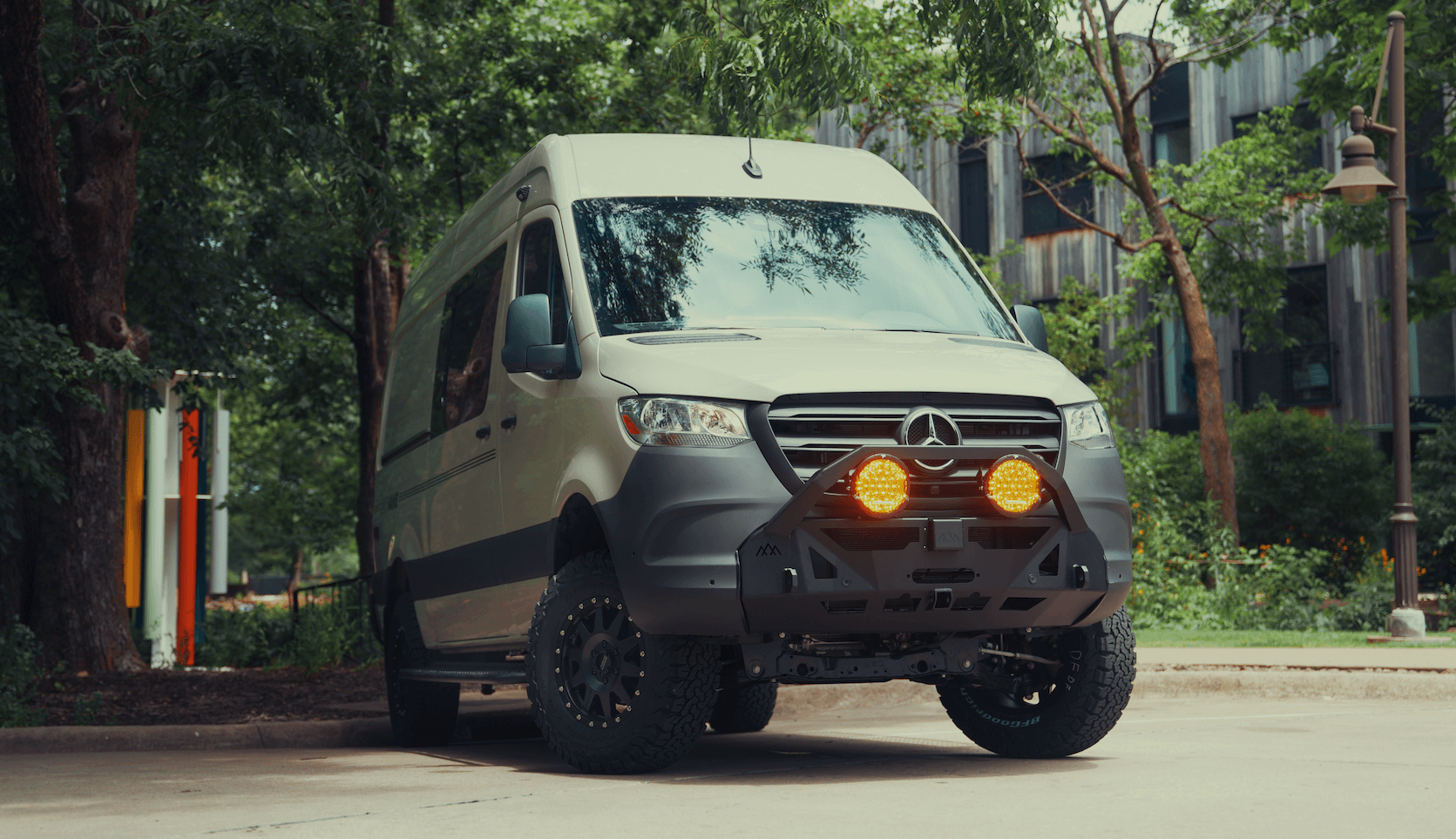Recreational Vans

Leaf springs act like stacked steel rulers that flex under load. The pack resists compression, controls axle position, and helps set ride height. Over time, constant cargo, towing, or added equipment can flatten the arch and cause sag, axle hop, and harsh bottoming. A rear leaf pack upgrade restores spring rate and adds stability for heavy payloads or off road travel. The result is better weight support, more consistent ride height, and improved confidence on broken pavement and washboard.
Each leaf shares the load across the pack. As force increases, the arch flattens and the spring rate rises. The clamps and center bolt keep the leaves aligned while bushings and shackles allow movement. When shocks are matched to the spring rate, the system damps rebound and prevents oscillation. That harmony is what separates a smooth, planted truck or van from a choppy, tail happy ride.
Common cues include persistent rear sag, excessive squat when hitched, axle wrap under throttle, bottoming with camping gear, and a bouncy feel after speed bumps. Uneven tire wear, poor towing manners, and constant reliance on air bags to hold height are also early flags. If your rig sits nose high after loading, the rear springs are likely undersized for your real world payload.
Upgraded packs can add progressive support so daily comfort remains while loaded control improves. You will see reduced sway in crosswinds, steadier tracking with trailers, and fewer hard hits from potholes. A balanced spring and shock combo also helps braking stability by keeping the rear tires planted rather than skittering under rough stops.
The best choice matches constant payload and travel style. Overlanders with fridges, water, and drawers need heavier baseline rate with a progressive second stage for rough roads. Tradespeople may prefer a multi leaf pack with an overload leaf that only engages under heavier tools or materials. Towing focused setups often keep a mild rake for hitch weight while avoiding excessive stiffness when unladen. Ratings should respect GVWR and axle limits while targeting the real loaded weight you carry most often.
Common configurations include full replacement packs, add a leaf options, and multi stage packs that add secondary support pads. Full packs deliver the most predictable curve and long term durability. Add a leaf can bump rate and height at lower cost, but it is a compromise when the base pack is tired. Parabolic springs can reduce interleaf friction for better sensitivity, though they require matching shocks and careful hardware selection.
Materials and construction quality matter. Look for proper heat treatment, anti friction tips or liners to reduce squeak, and corrosion resistant coatings. New u bolts, properly sized shackles, and fresh bushings are not optional. Old hardware can lead to clunks, misalignment, and premature wear.
A rear leaf pack upgrade is only as good as its setup. Measure pre load ride height, check frame and axle alignment, and note current shock travel so you can verify improvements. After installation, torque u bolts in stages with the weight on the suspension, then re torque after the first few hundred miles. Confirm bump stop clearance and ensure the driveshaft and brake lines have adequate length through full travel.
Shock selection is the multiplier. A higher spring rate needs damping with more control, especially in rebound, to avoid a pogo feel. Pair the pack with quality shocks tuned for your vehicle weight, tire size, and typical terrain. If you add weight later, revisit damping to keep the balance. Finally, plan for maintenance. Inspect bushings, shackles, and spring clips during tire rotations. Address squeaks with proper liners or tip inserts rather than greasing bare steel, which can attract grit.
A quick word on air support. Air springs can level a load but they should not be used to mask a worn pack. Air can complement a correct leaf rate, but the leaf pack remains the backbone that carries the weight and locates the axle.
From here, drivers often combine the rear leaf pack upgrade with front coil or torsion tuning to maintain even stance and predictable handling. The goal is a simple one. Your rig should sit right and drive straight whether empty or fully loaded, whether rolling to the grocery store or crossing a mountain pass.
Strong suspension knowledge matters when builds include cabinetry, water, power systems, and gear that never leave the vehicle. In those cases, the spring rate should be set around that constant payload rather than peak holiday weight. This approach prevents constant sag and keeps shocks in their ideal working range.
If you are planning a van or truck build and want your suspension to feel dialed with real cargo, we can help. OZK Customs designs complete rigs and targeted upfits that include rear leaf pack upgrade solutions, matched shocks, and hardware, all tested on the roads and trails of Northwest Arkansas. Tell us how you travel, and we will tune the setup to fit your payload and terrain.
Related pages
Ready for confident load control and a smoother ride. Our team designs and installs rear leaf pack upgrades, matched shocks, and supporting hardware as part of full custom builds or targeted upfits. Tell us how you travel, and we will tune your suspension for it. Start your build plan now.
ADDRESS:
6159 E Huntsville Rd, Fayetteville, AR 72701
PHONE:
(479) 326-9200
EMAIL:
info@ozkvans.com